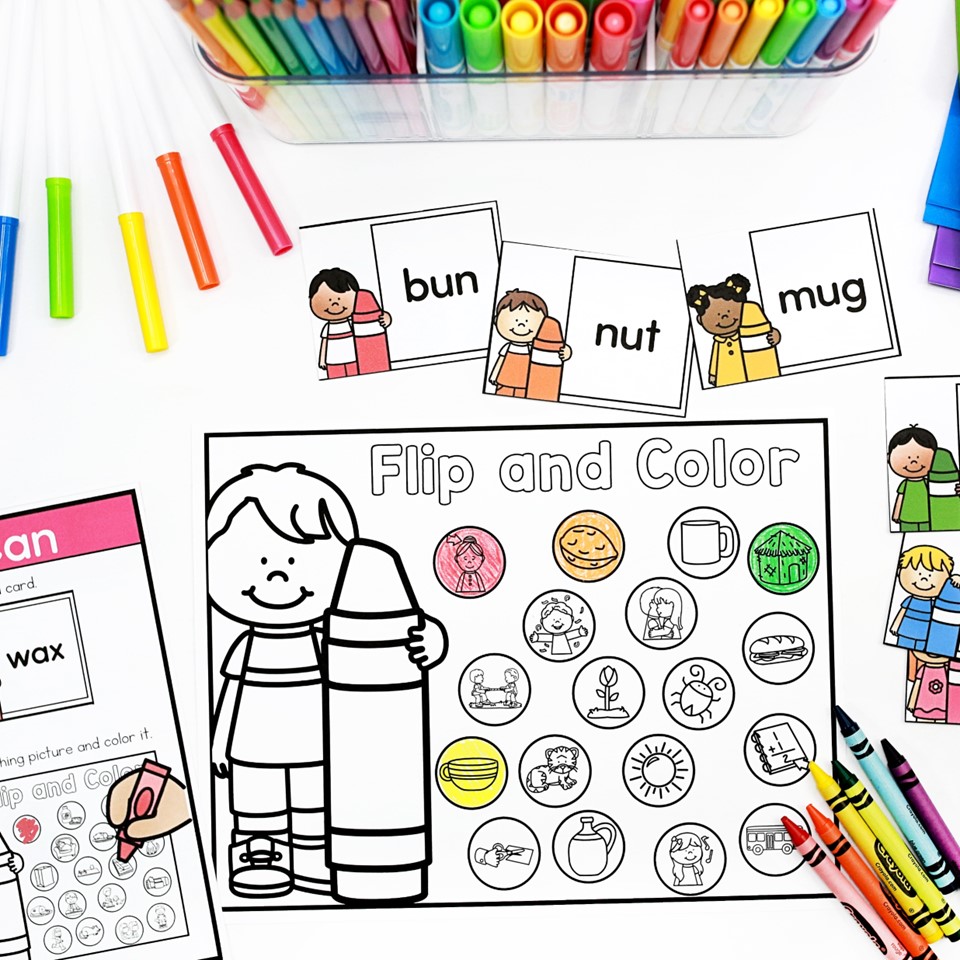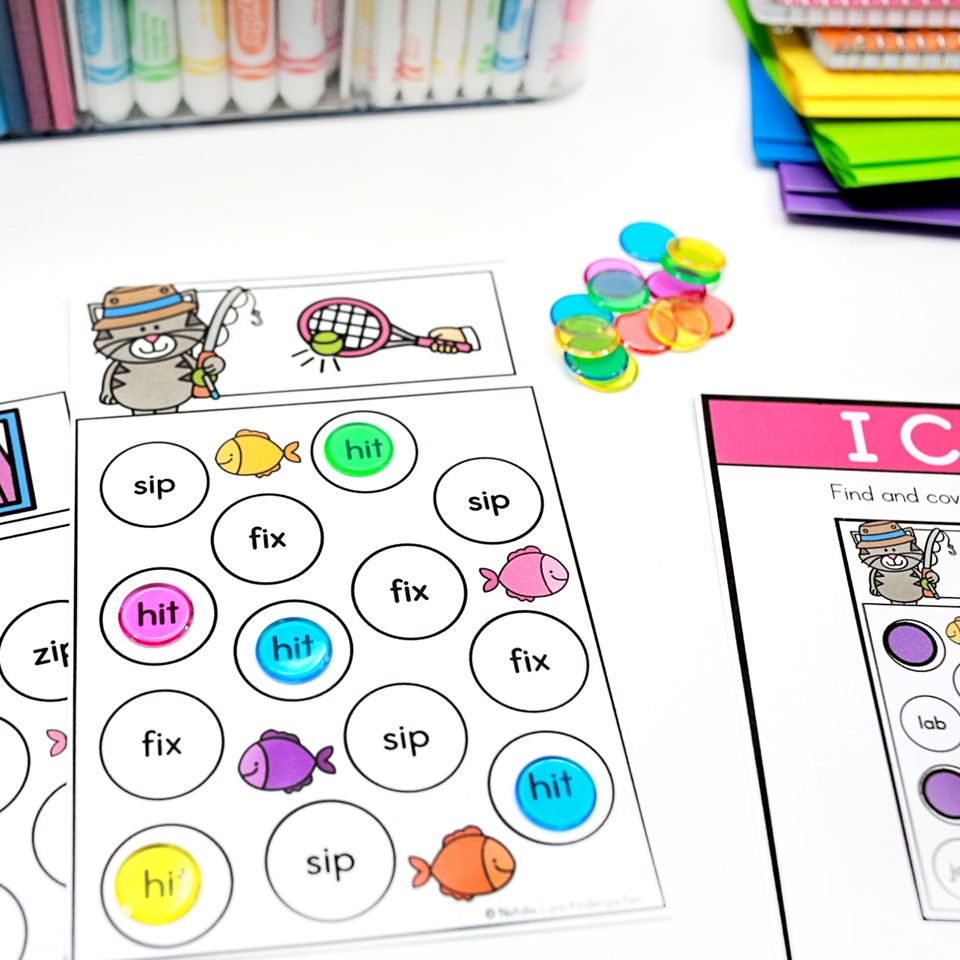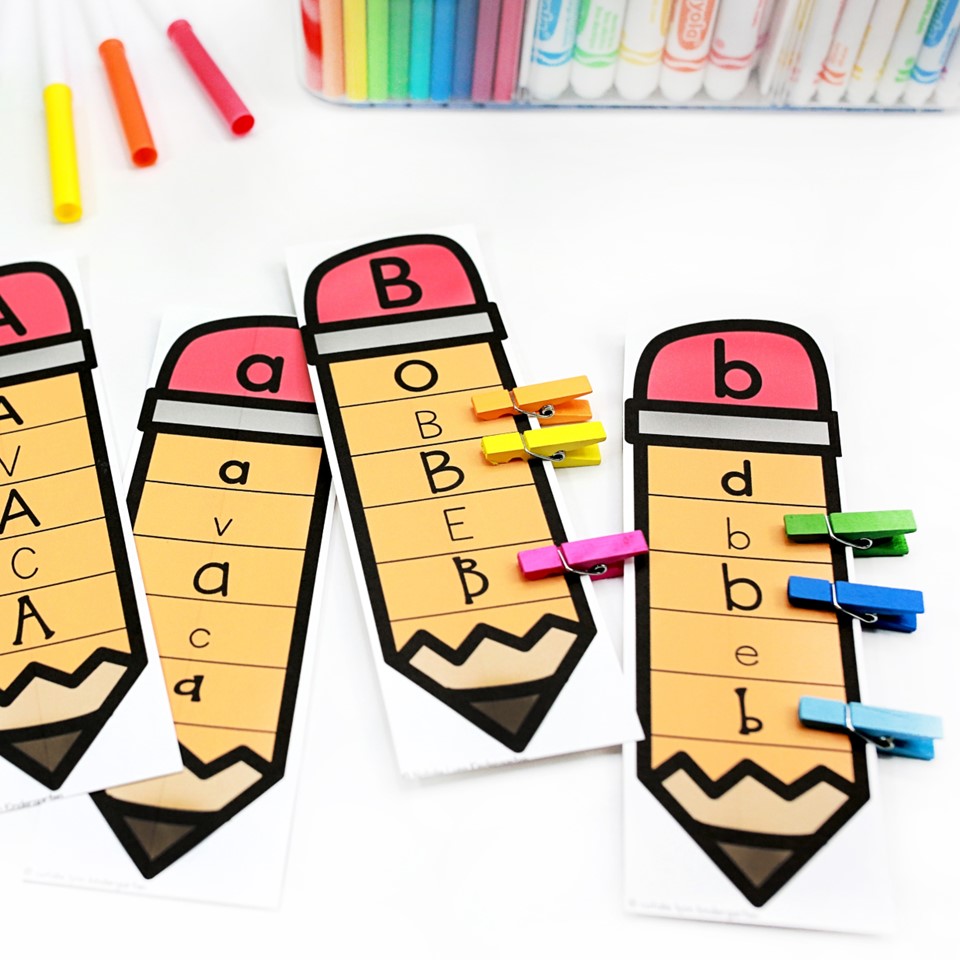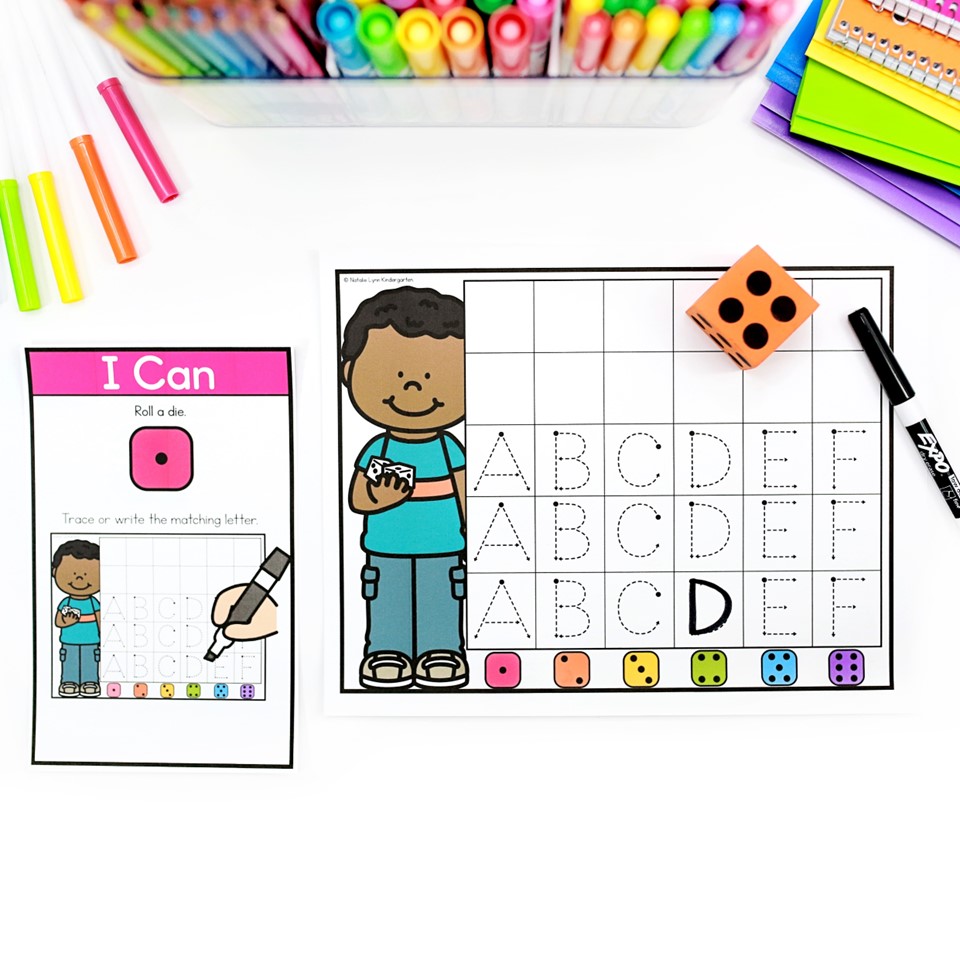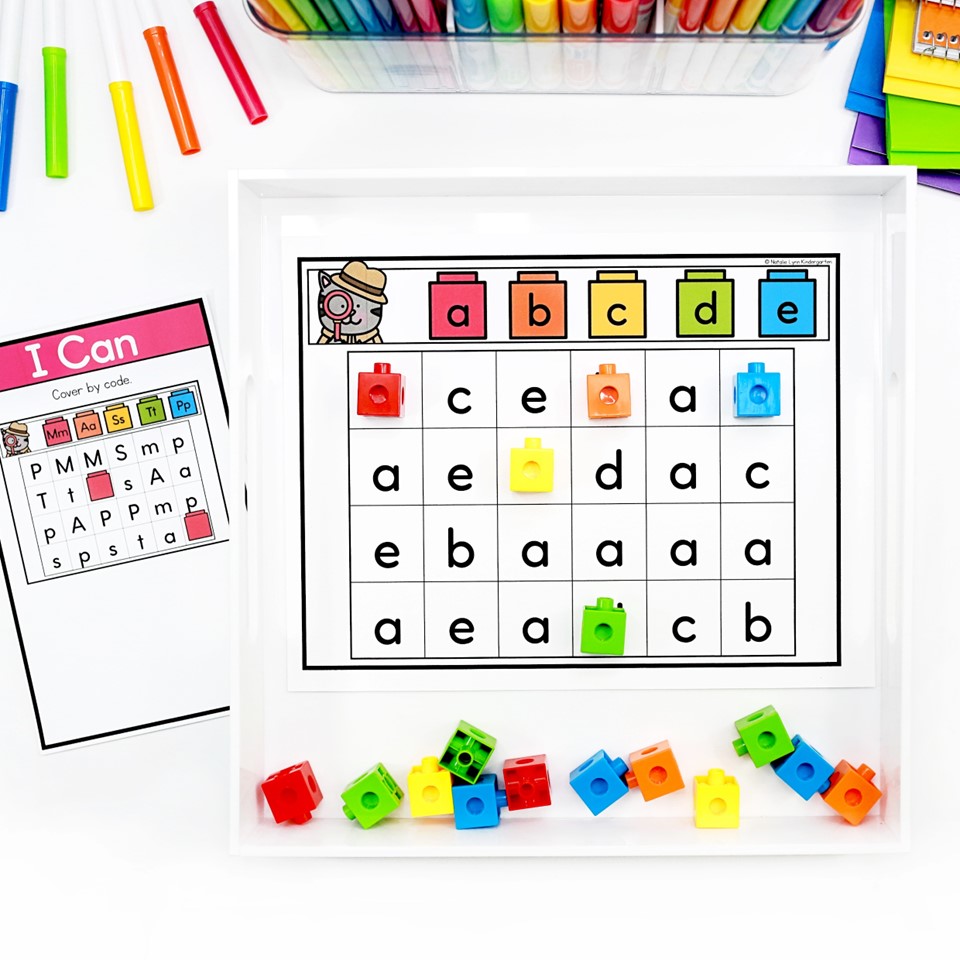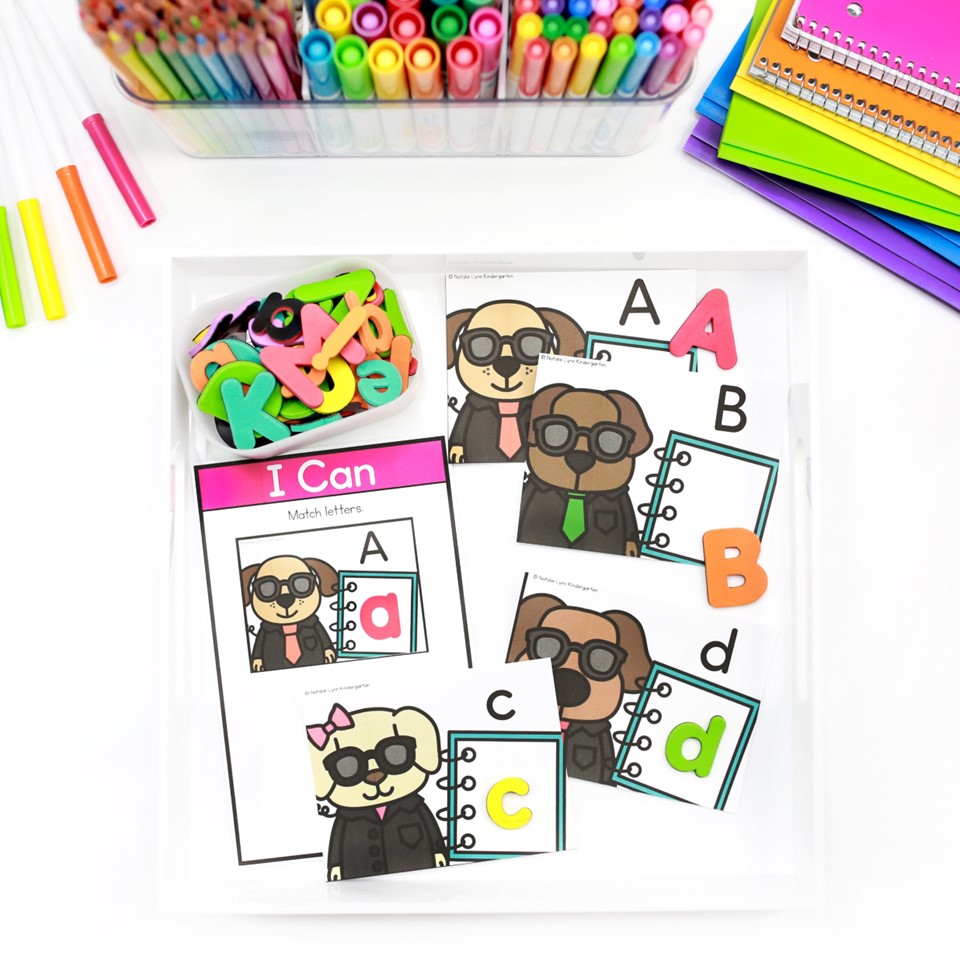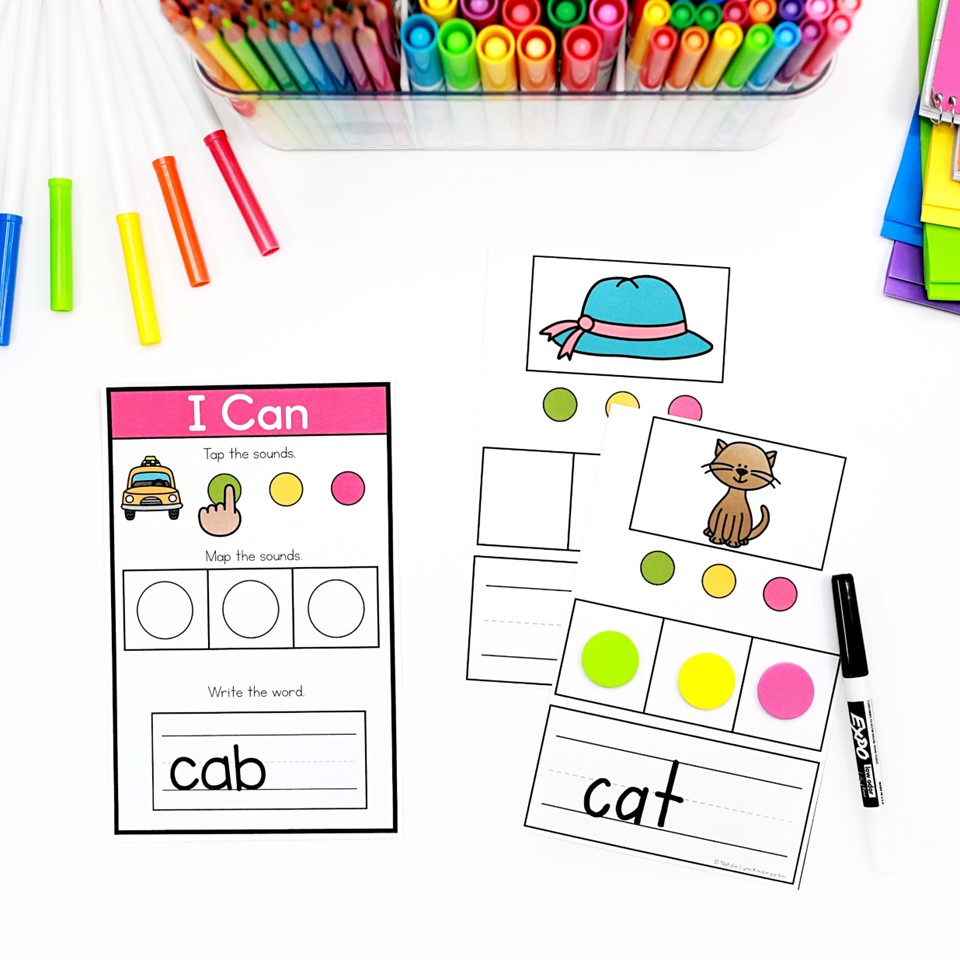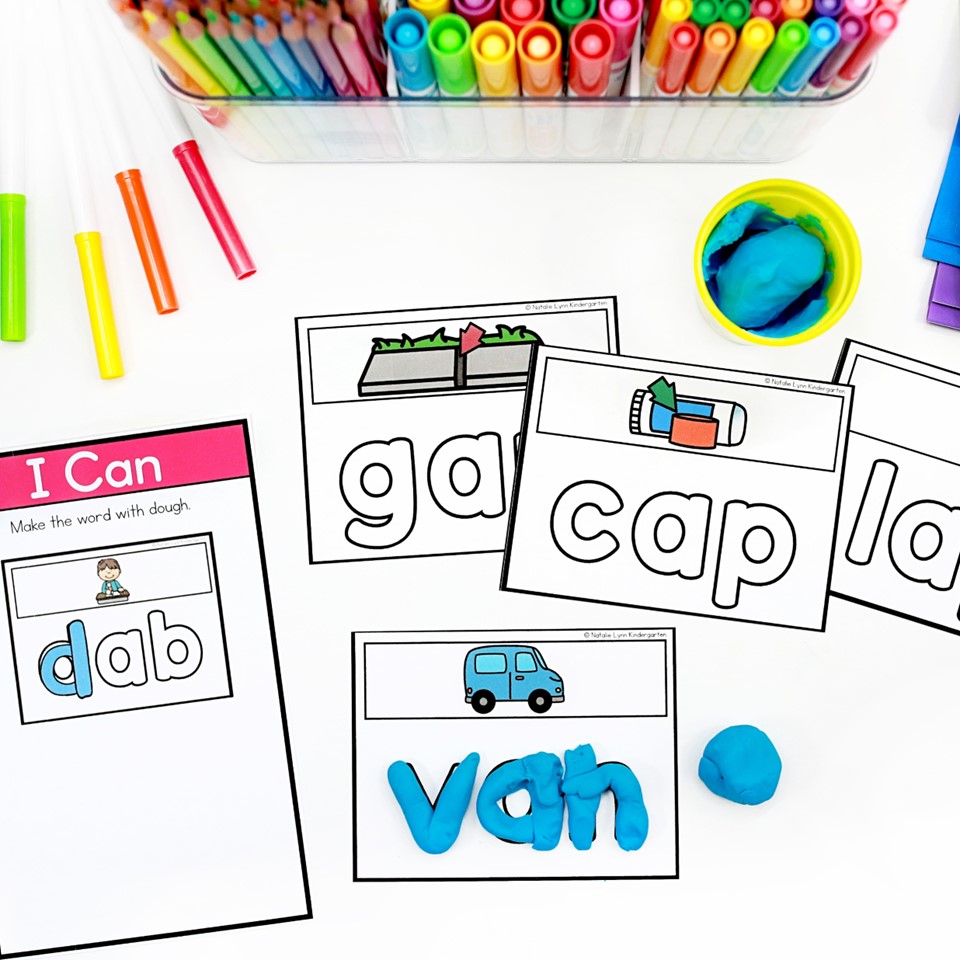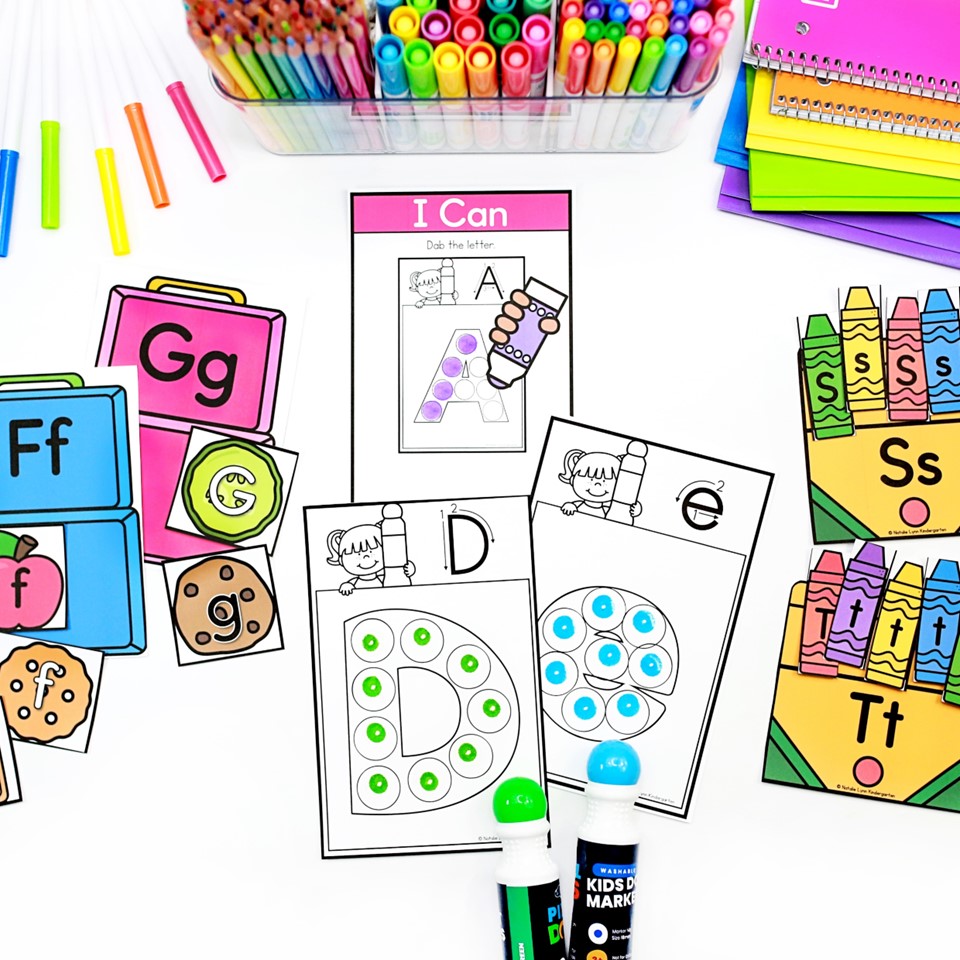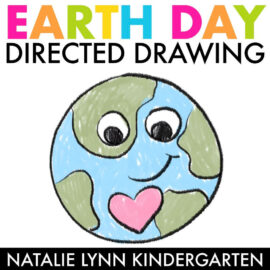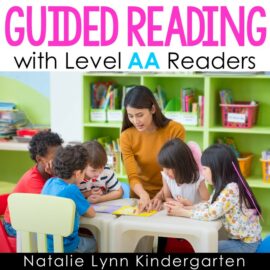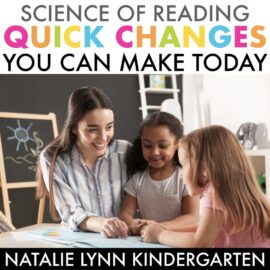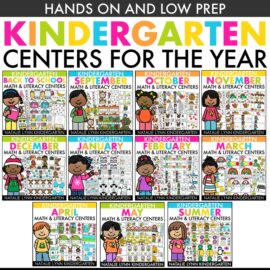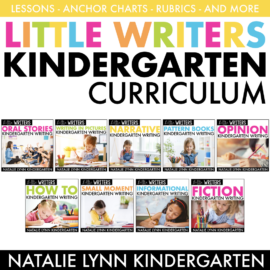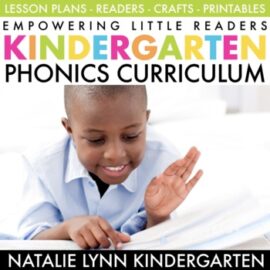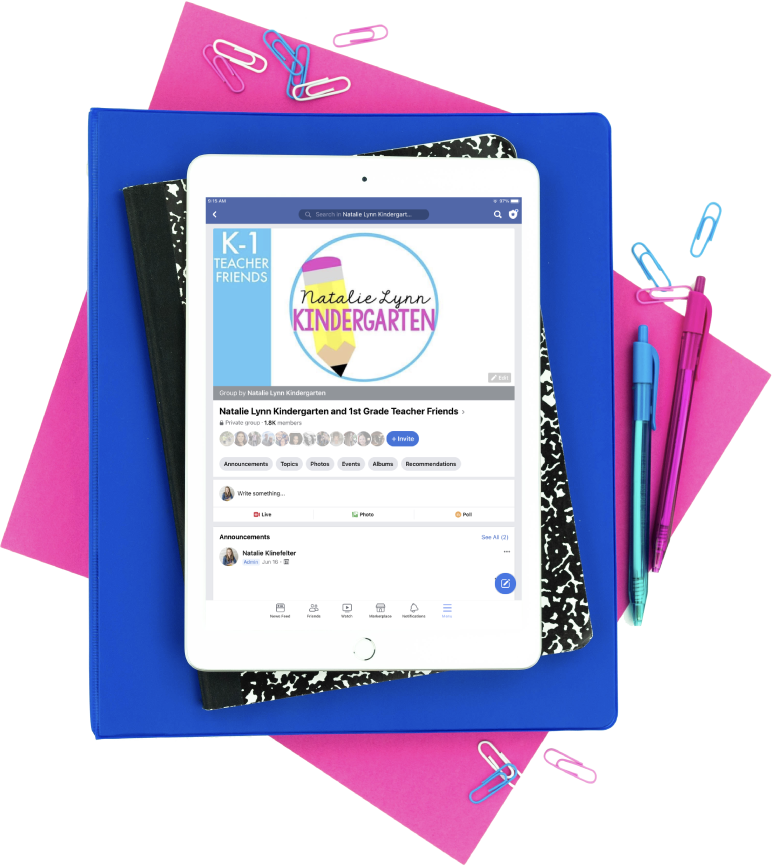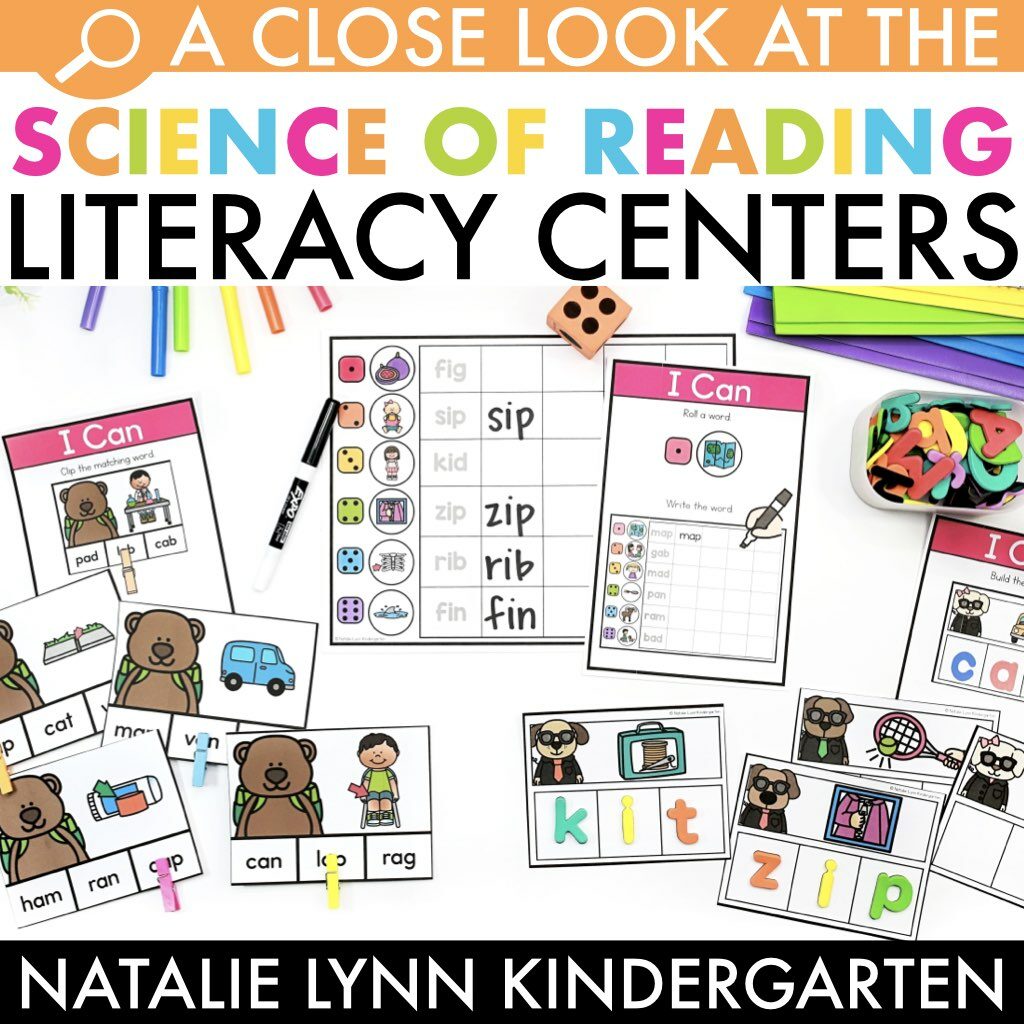
In this blog post: We will take a closer look at the Science of Reading centers and how they align with the Science of Reading Curriculum.
If you’re new to the Science of Reading, you might be wondering, “What are the other students doing while i’m teaching small groups?”
In the past, they’ve done literacy centers… but can I still do literacy centers or do I need to ditch them?
This might be a debated topic, but i’m here to say – DON’T toss out your literacy centers!
Literacy centers are so important because they allow students to practice working independently and review taught skills in context. They also give you a chance to meet with small groups while your students are engaged in learning activities.
So how do I make sure that my literacy centers align with best practices from the Science of Reading?
aligning your literacy centers with sor
I want to start out by saying, you don’t need specific SOR centers for your literacy center time. Any literacy centers will work, you just want to make sure that they follow a few guidelines.
First, look for literacy centers that align with your phonics scope and sequence. This is important because we want students practicing skills that they’ve already been taught.
If you teach digraphs right after CVC words, you don’t want students working on a digraphs center if it has words like shark or cherry. Why?
Because they contain phonics skills that students haven’t been taught yet, which means that they can’t truly decode and read those words. They can guess them, but that isn’t truly reading.
You want to look for literacy centers that either build through a phonics scope and sequence, or find your own and curate them to match your scope and sequence.
Next, look for literacy centers that your students can truly be independent at. I prefer predictable centers because once I teach them, students will know what to do even if the skills build and change.
If students are working on literacy centers while you’re teaching your science of reading small groups, you want to make sure that they are able to complete those activities on their own.
science of reading literacy centers
So now let’s take a look at my Science of Reading literacy centers! And I know what you’re thinking. Didn’t you just say above that we don’t need specific SOR literacy centers?
I’m calling these Science of Reading literacy centers because they 100% align with best practices from the Science of Reading. They follow the same sequence as my Science of Reading Guided Curriculum, and slowly build through the phonics scope and sequence.
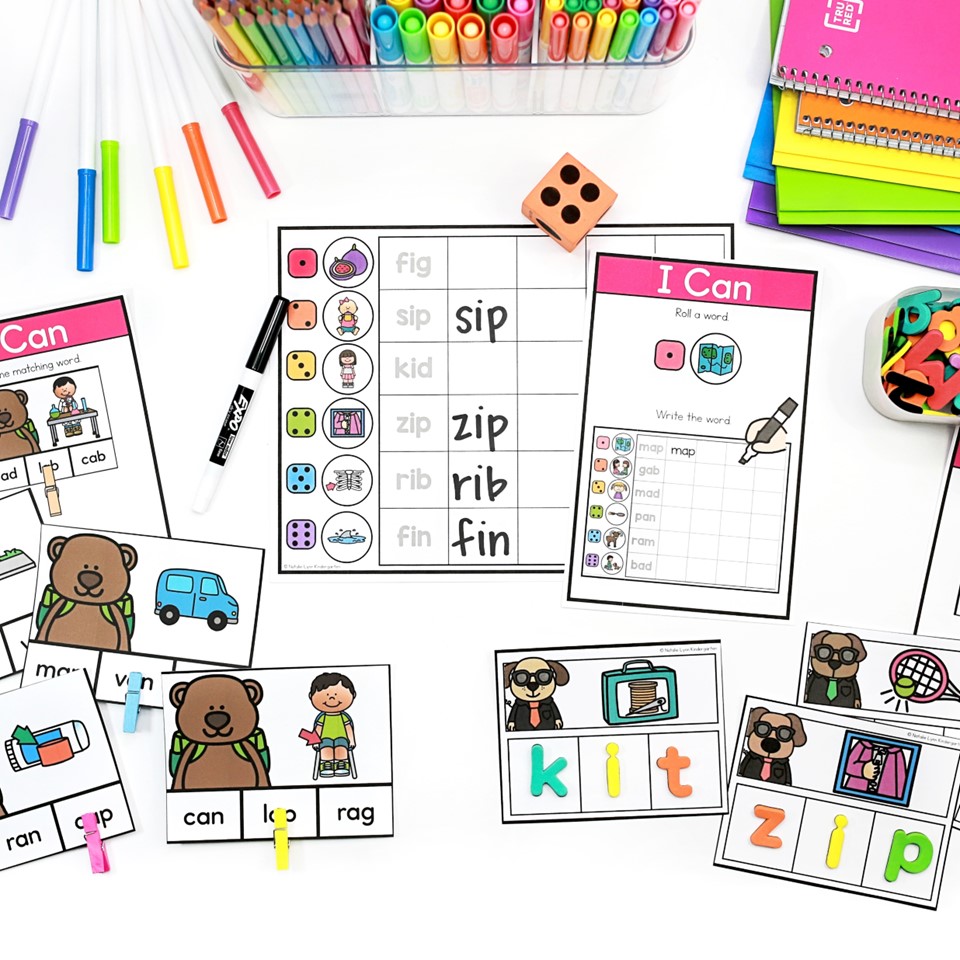
If your students are working on digraphs, they will ONLY be working on decoding words with digraphs – no blends, vowel teams, or r-controlled vowels. These literacy centers are very controlled to make sure that your students are completing work that is a good fit for them.
The Science of Reading centers are also predictable centers.
The center activities in each unit follow a similar format throughout the units, only the skills and clip art changes. This allows your students to truly be independent!
And the best part? Every pack contains over 20 hands-on literacy center activities. That means that you’ll never run out of ways for your students to practice.
Let’s take a closer look at some of the activities included in the Science of Reading centers.
Letter ID Centers
The Letter ID Centers will help your students learn to recognize and write letters. They include options to make differentiation easy so your students can work on visual discrimination with letters or letter recognition, naming, and formation.
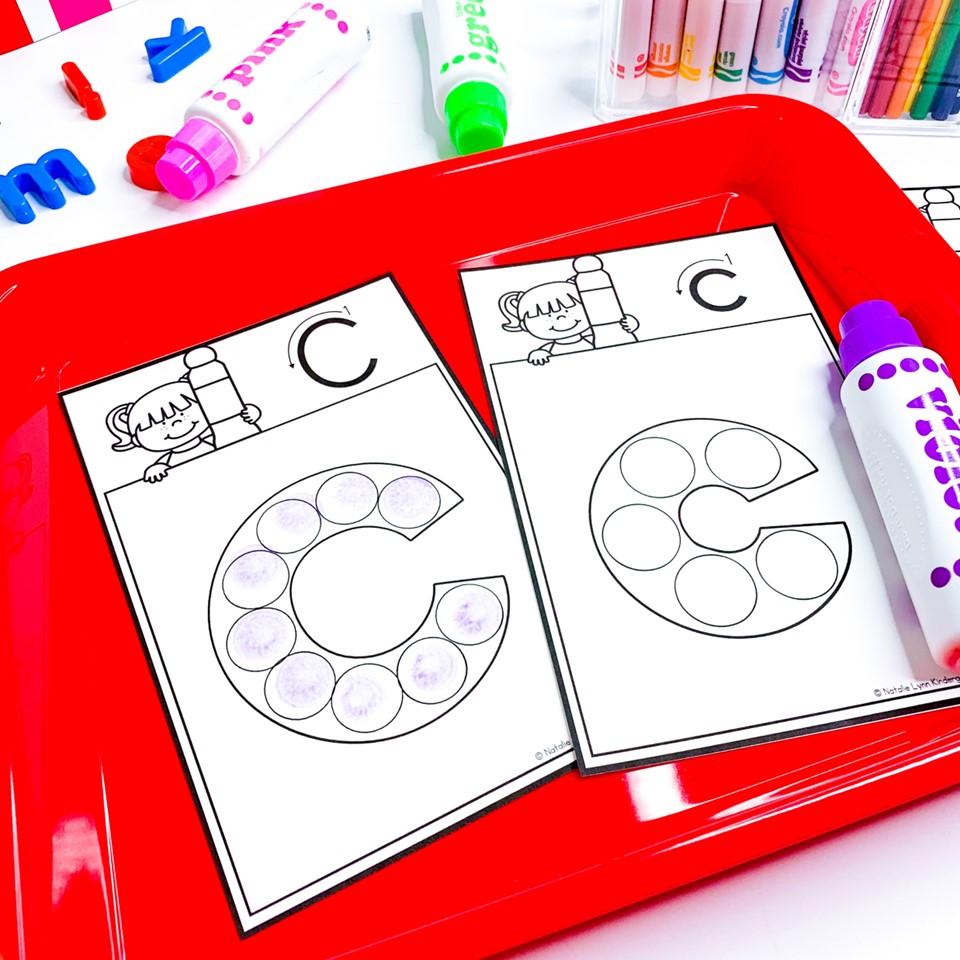
This set includes 21 engaging, hands on activities including:
- Alphabet Clip Wheels
- Alphabet Cover by Code
- Letter Clip Strips
- Roll and Write Letters
- Roll and Cover Letters
- Alphabet Dough Cards
- Alphabet Letter Dab It
- Trace and Cover Letters
- Magnetic Letter Alphabet Match Ups
- Cover or Dab Letter Mats
- Magnetic Letter Match Its
- Pencil Clip Cards
- Alphabet Lunchbox Sorts
- Alphabet Letter Sorting Mats
- Magnetic Letter Matching Mats
- Alphabet Flip and Color
- Crayon Box Alphabet Sorts
- Spin a Letter Gameboards
- Bear Clip Cards
- Sensory Handwriting Cards
- Alphabet Letter Puzzles
Roll and Cover is one of my favorite activities included! For this literacy center, students will roll a die and then cover the corresponding letter.
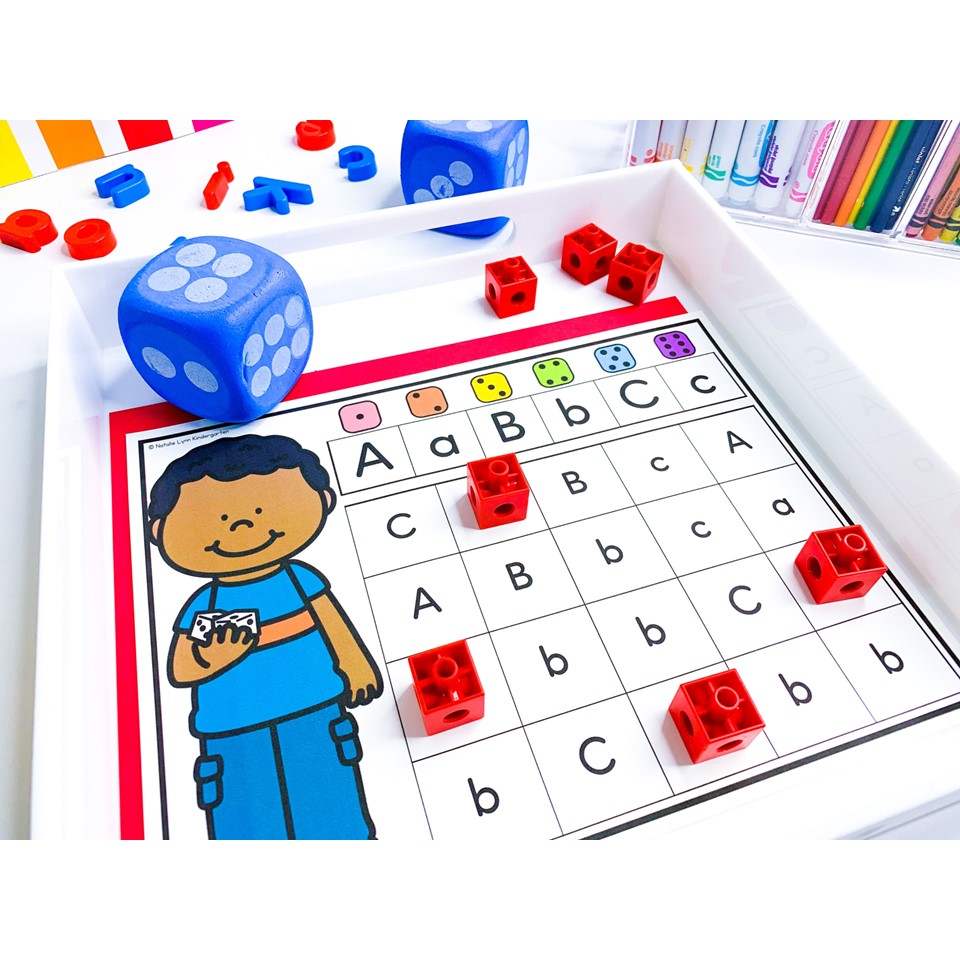
With alphabet centers, it can feel like the same the thing over and over again, so I tried to give you a variety of literacy center activities to choose from so that you could always keep things fresh!
letter sounds centers
Once your students master letter ID, they would move to the letter sounds centers or they might work on them simultaneously. The letter sounds centers focus on identifying beginning sounds.
When developing the Science of Reading centers, I was careful to choose words that were a true representation of the most common letter sound – no owl for Oo or acorn for Aa.
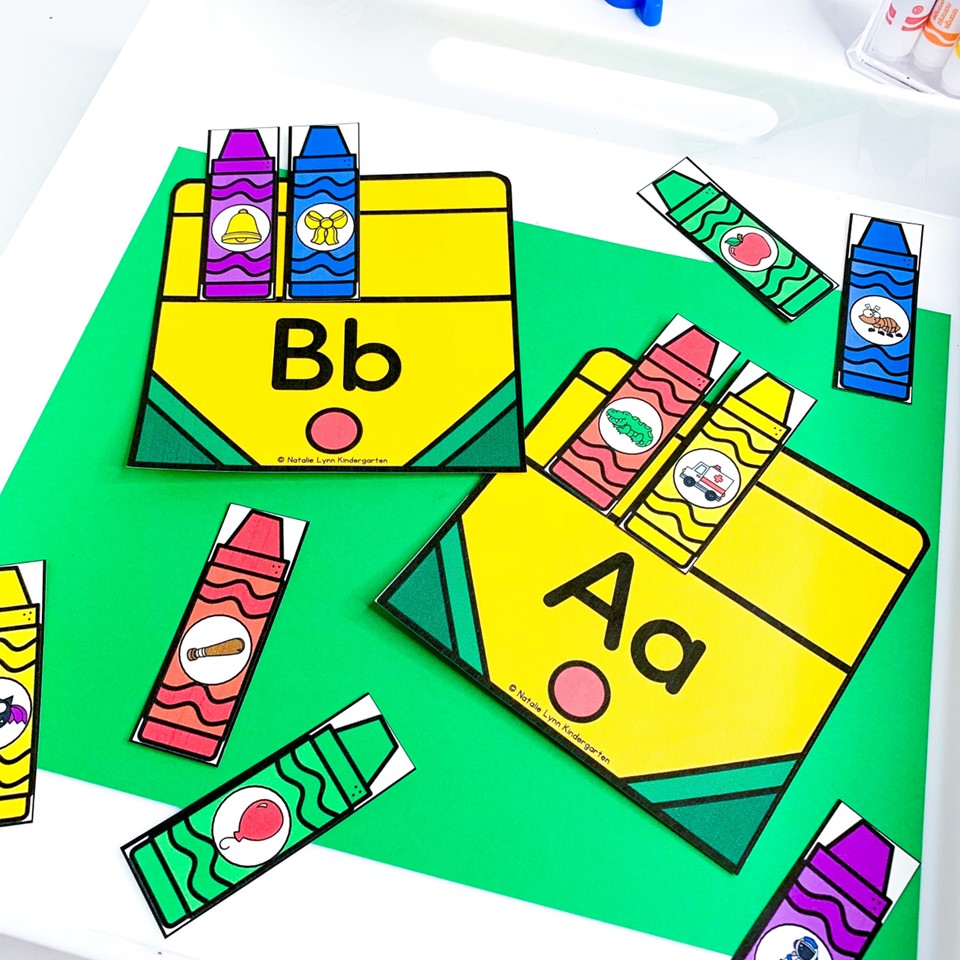
In this pack, you will find:
- Beginning Sounds Clip Wheels
- Beginning Sounds Cover by Code
- Beginning Sounds Clip Strips
- Roll and Cover Beginning Sounds
- Find and Cover Letter Sounds
- Trace and Cover Letter Sounds
- Beginning Sounds Magnetic Letter Match Ups
- Cover or Dab Letter Sound Mats
- Beginning Sound Magnetic Match Ups
- Letter Sound Puzzle Mats
- Flip and Color Beginning Sounds
- Crayon Box Beginning Sound Sorts
- Spin a Beginning Sound Gameboards
- Bear Clip Cards
How fun are these Letter Sound Puzzles? Students will match letters to the pictures that begin with the letters to solve the puzzles! This is always a students favorite!
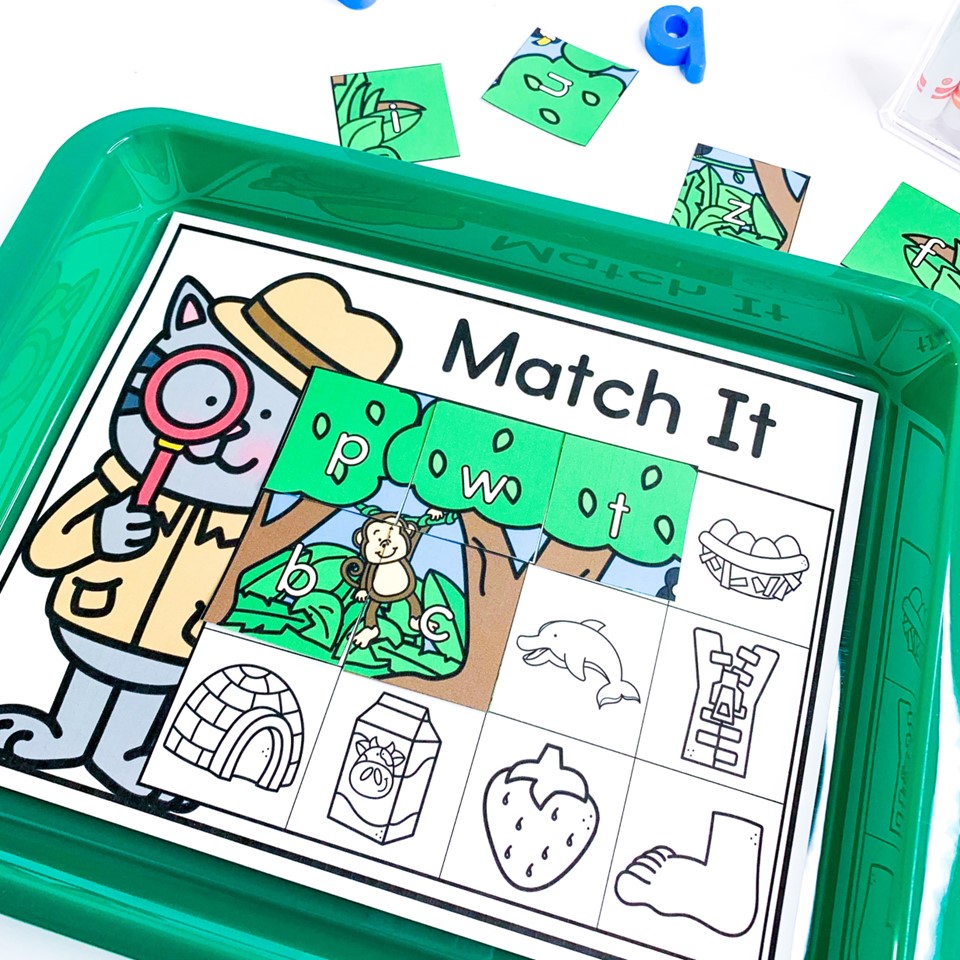
FREE ending sounds centers!
It is so important to work on identifying ending sounds with our beginning readers, but it can be impossible to find ending sounds literacy centers!
That’s why I included a BONUS ending sound centers mini pack in the Science of Reading Centers Bundle. Students will work on identifying ending sounds in CVC words before they are asked to decode and encode entire words.
You can grab them to try out these centers for FREE here!
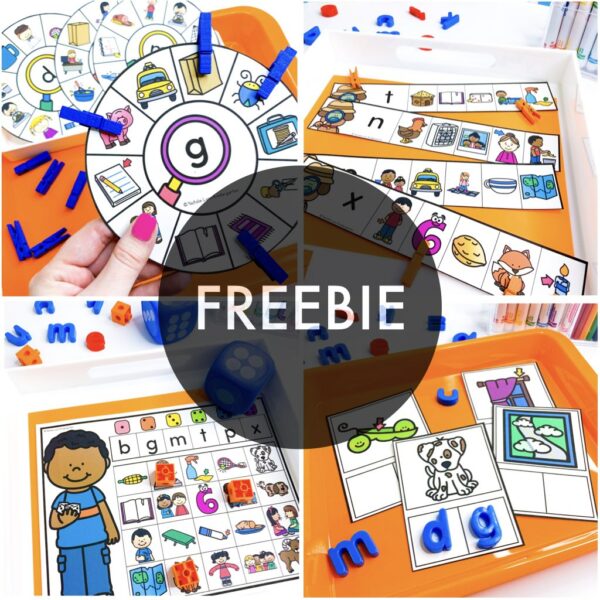
Do you love free stuff?
Ending Sounds Centers
These ending sounds centers are perfect for identifying sounds in words!
CVC Words Centers
We work on CVC Words a LOT in Kindergarten, so it’s important that we have CVC word centers that are meaningful and allow our students to truly dig into those words.
I even love pulling these center activities to use in small groups! It’s a great way to assess students and see what they know in a playful, low stress way.
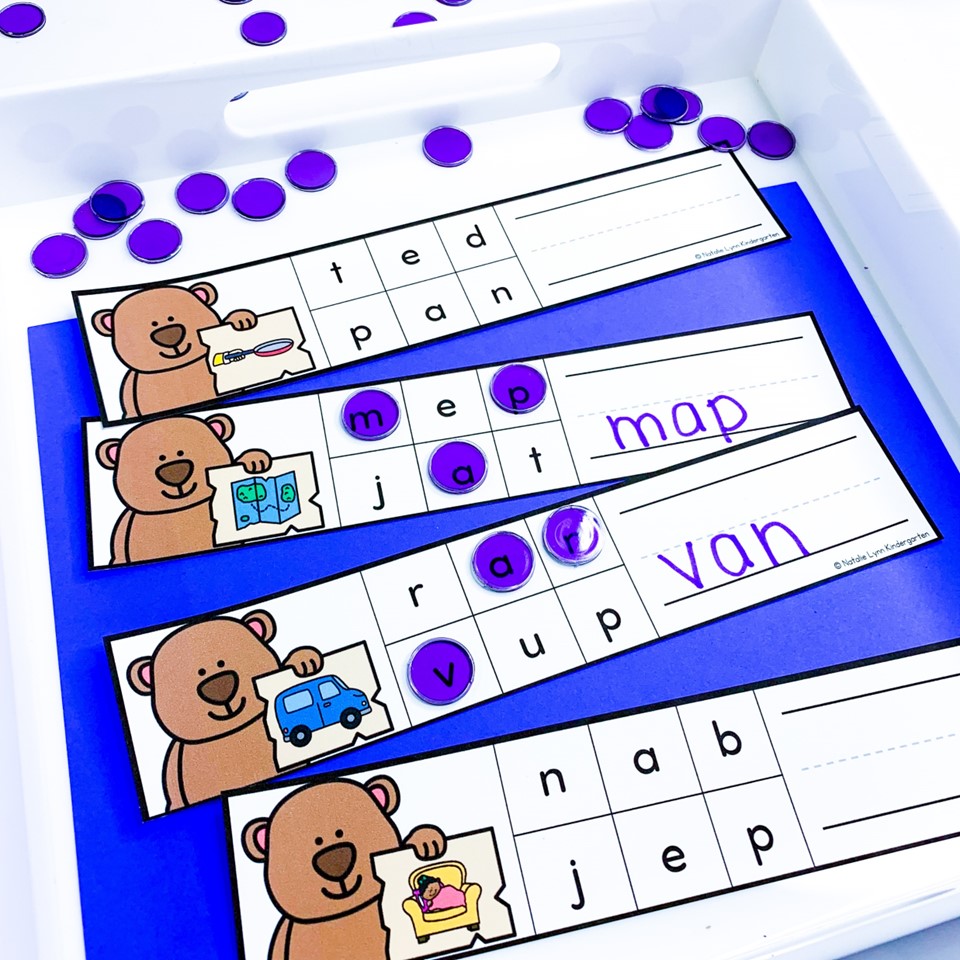
This set includes:
- Short Vowel Sounds Clip Wheels
- CVC Word Clip Wheels
- CVC Words Cover by Code
- Short Vowels Clip Strips
- CVC Words Clip Strips
- Spell and Write CVC Words
- Roll and Write CVC Words
- Roll, Read, and Cover CVC Words
- CVC Dough Mats
- Tap it, Map it, Write It Mats
- Find and Cover Mats
- Read and Match It Mats
- Build It Cards
- CVC Decodable Sentences Match It Mats
- CVC Decodable Sentences Pocket Chart Builders
- CVC Decodable Sentences Read and Match Mats
- Flip and Color CVC Words
- Spin a Word Gameboards
- Spin a Vowel Gameboards
- Bear Clip Cards
- Word Ladders or Word Chain Mats
- Spin It, Tap it, Map it, Write it Mats
- CVC Word Sentence Pyramids for Fluency Worksheets
- Read and Dab It Worksheets
What I love most about the Science of Reading centers is that students get to work with the words in isolation, but they also are asked to use them in context!
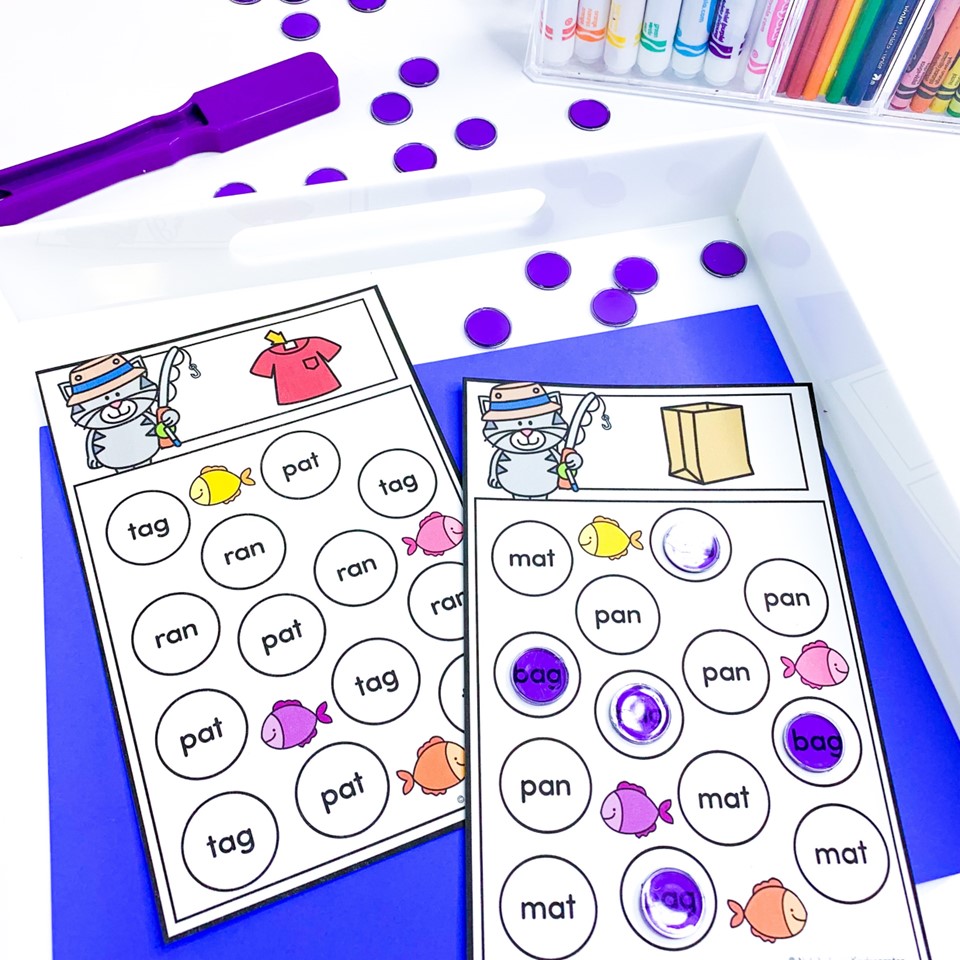
There are a variety of decodable sentences centers included that ask students to read and comprehend sentences with CVC words. One activity is decodable sentences pocket chart builders.
Students will build the decodable sentence and then read it and match the picture. Since the picture isn’t included on the sentence building cards at all, students have to truly read and comprehend the sentence.
digraphs and double consonants centers
Once students have master CVC words, they are ready to move into digraphs and double consonants. Digraphs can be tricky for our students to learn, so it’s important that we give them a variety of ways to practice and use those words!
The Digraphs Science of Reading centers include:
- Digraph Clip Wheels
- Digraph Words Clip Wheels
- Read and Cover by Code
- Digraphs Cover by Code
- Digraphs Clip or Cover Strips
- Spell and Write Words
- Roll and Write Words
- Roll, Read, and Cover Words
- Digraphs Dough Mats
- Tap it, Map it, Write It Mats
- Find and Cover Mats
- Read and Match It Mats
- Build It Cards
- Digraphs Decodable Sentences Match It Mats
- Digraphs Decodable Sentences Pocket Chart Builders
- Digraphs Decodable Sentences Read and Match Mats
- Flip and Color Digraph Words
- Spin a Word Gameboards
- Spin a Digraph Gameboards
- Digraphs Read and Clip Cards
- Word Ladders / Word Chains Mats
- Spin It, Tap it, Map it, Write it Mats
- Digraphs Sentence Pyramids for Fluency Worksheets
- Read and Dab It Worksheets
This set also includes 20 double consonant centers that follow the same format as the digraph centers! You can mix these in or use them separately.
beginning blends centers
Once your students have master digraphs, they are ready to move into decoding words with 4 sounds – beginning blends words! It can be tricky to find beginning blends centers that stay true to your phonics scope and sequence.
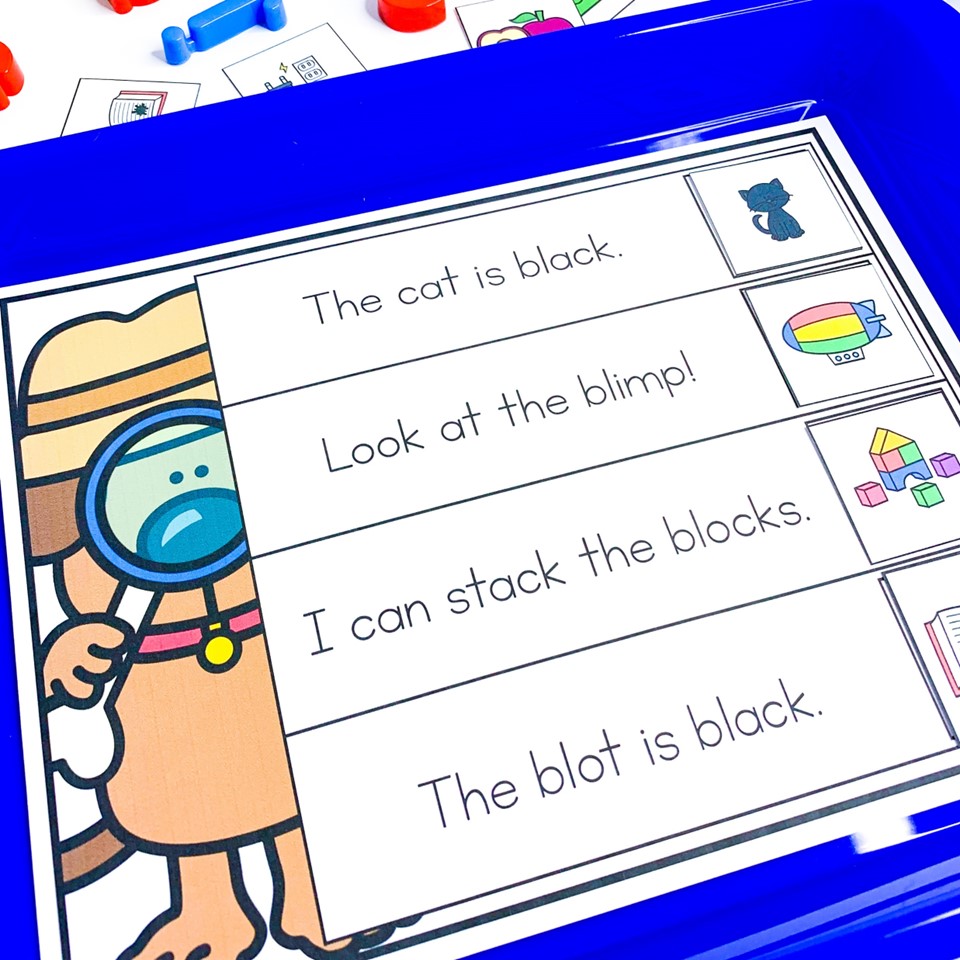
That’s why it was so important to me to make these Science of Reading centers! We need to make sure that our students are working with words that truly fit the skills we’ve taught.
The Beginning Blends Science of Reading centers include:
- Beginning Blends Clip Wheels
- Beginning Blends Words Clip Wheels
- Read and Cover by Code
- Beginning Blends Cover by Code
- Spell and Write Words
- Roll and Write Words
- Roll, Read, and Cover Words
- Beginning Blends Dough Mats
- Tap it, Map it, Write It Mats
- Find and Cover Mats
- Read and Match It Mats
- Build It Cards
- Beginning Blends Decodable Sentences Match It Mats
- Beginning Blends Decodable Sentences Pocket Chart Builders
- Beginning Blends Decodable Sentences Read and Match Mats
- Flip and Color Beginning Blends
- Spin a Word Gameboards
- Beginning Blends Read and Clip Cards
- Spin It, Tap it, Map it, Write it Mats
- Beginning Blends Sentence Pyramids for Fluency Worksheets
- Read and Dab It Worksheets
Working with multisyllable words
In the Beginning Blends unit of my Science of Reading Curriculum and beyond, students are asked to work with multisyllable words. Wow, this can be a hard skill to find literacy centers for!
That’s why i’m including multisyllable word mini packs for every syllable type in my Science of Reading Centers. These literacy centers will work on reading multisyllable words that are controlled to only have the syllable types taught and syllable division with those words.
In the Beginning Blends Unit, students are introduced to the Rabbit Rule, closed consonants, and working with VCCV syllable division.
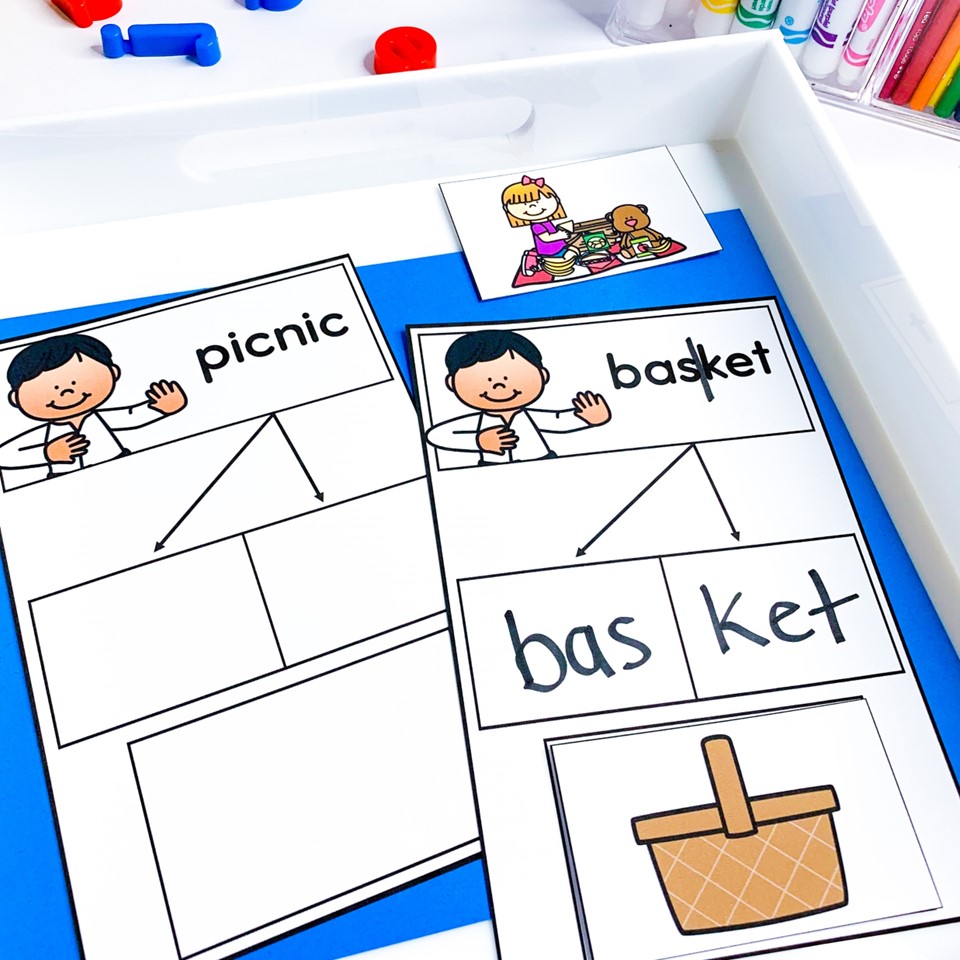
These literacy centers make multisyllable words hands-on!
- Cover by Code Words
- Cover and Write
- Roll and Write
- Roll and Cover
- Build It Cards
- Clap, Break, and Write
- Read and Match Decodable Sentences
- Flip and Color
- Clip Cards
- Divide it, Break It, Match It
- VCCV Word Puzzles
The Divide It, Break It, Match It center is a fun way to reinforce how we divide multisyllable words.
I know they seem simple, but my favorite activity is probably the syllable puzzles! Students love matching the syllables to the pictures to build the words. This center is a great way to reinforce the order of the syllables as well.

The Science of Reading Centers
If you’re looking for literacy centers that completely align with SoR best practices, you can’t go wrong with the Science of Reading Centers. These centers follow a phonics scope and sequence and build intentionally in skill, are predictable for students, and give you a variety of hands-on and engaging activities to keep each skill exciting!
If never having to search for literacy centers again sounds amazing to you, you can grab the Science of Reading Centers here!

